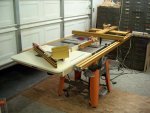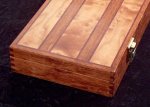Stuart Ablett
Member
- Messages
- 15,934
- Location
- Tokyo Japan
I've been wanting to make one of these for a while, I have a job up coming that I can use this on.

Nothing fancy, 21mm thick MDF, two layers,
the front layer is adjustable, right to left.
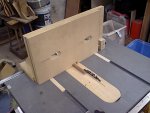
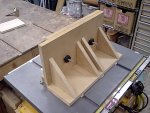
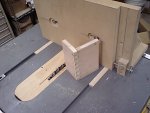
Works slick, that is a practice piece I did.
The only thing I'd like to change is to get a finer thread on the adjustment, the thread on there is way too coarse.
I'm also going to make the "Finger" area exchangeable, this will let me easily put different fingers in for different thicknesses of finger joints.
If you have a finger joint jig, then let's see it, I'm always looking for new good ideas
Cheers!

Nothing fancy, 21mm thick MDF, two layers,
the front layer is adjustable, right to left.



Works slick, that is a practice piece I did.
The only thing I'd like to change is to get a finer thread on the adjustment, the thread on there is way too coarse.
I'm also going to make the "Finger" area exchangeable, this will let me easily put different fingers in for different thicknesses of finger joints.
If you have a finger joint jig, then let's see it, I'm always looking for new good ideas
Cheers!






